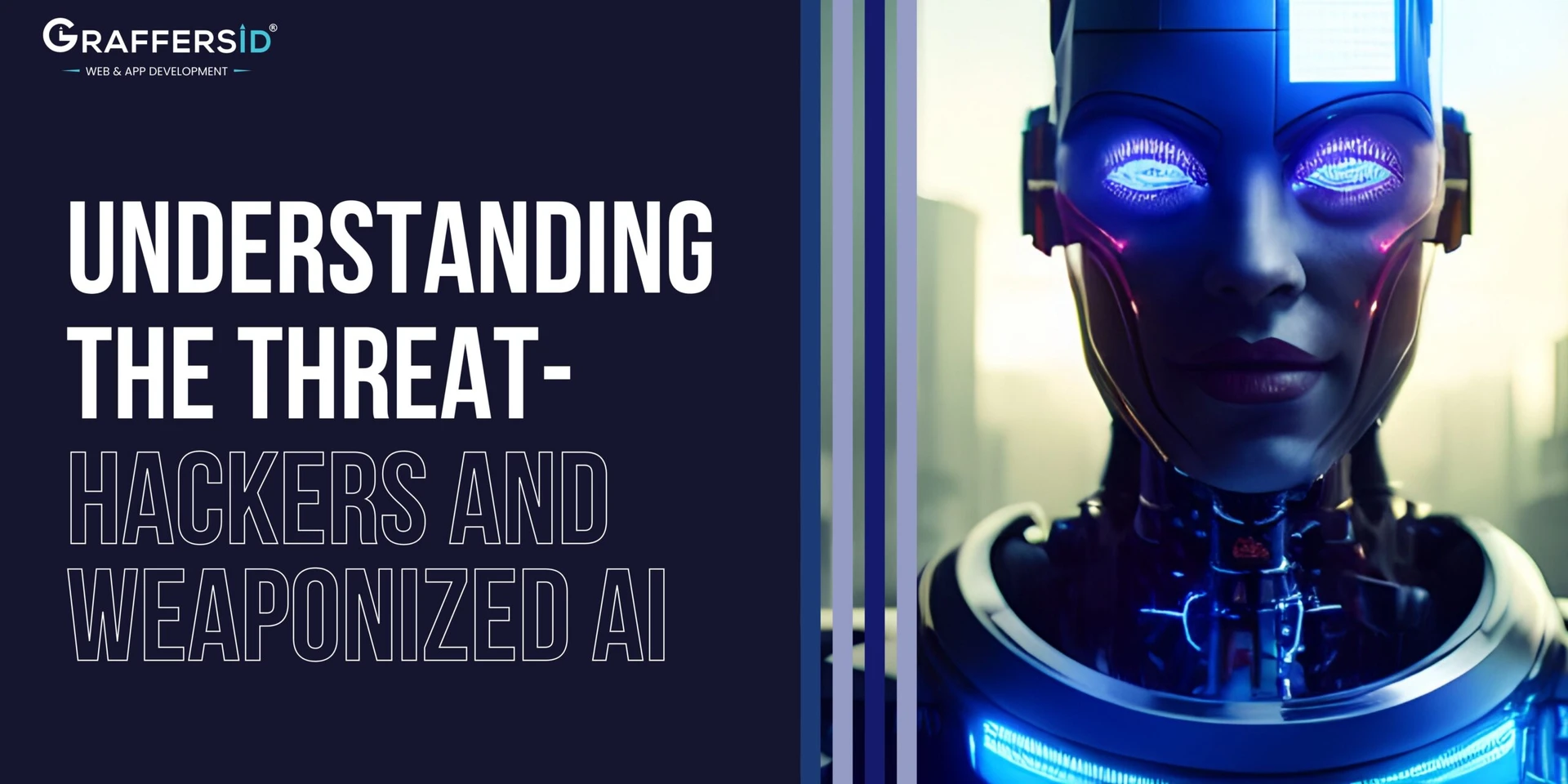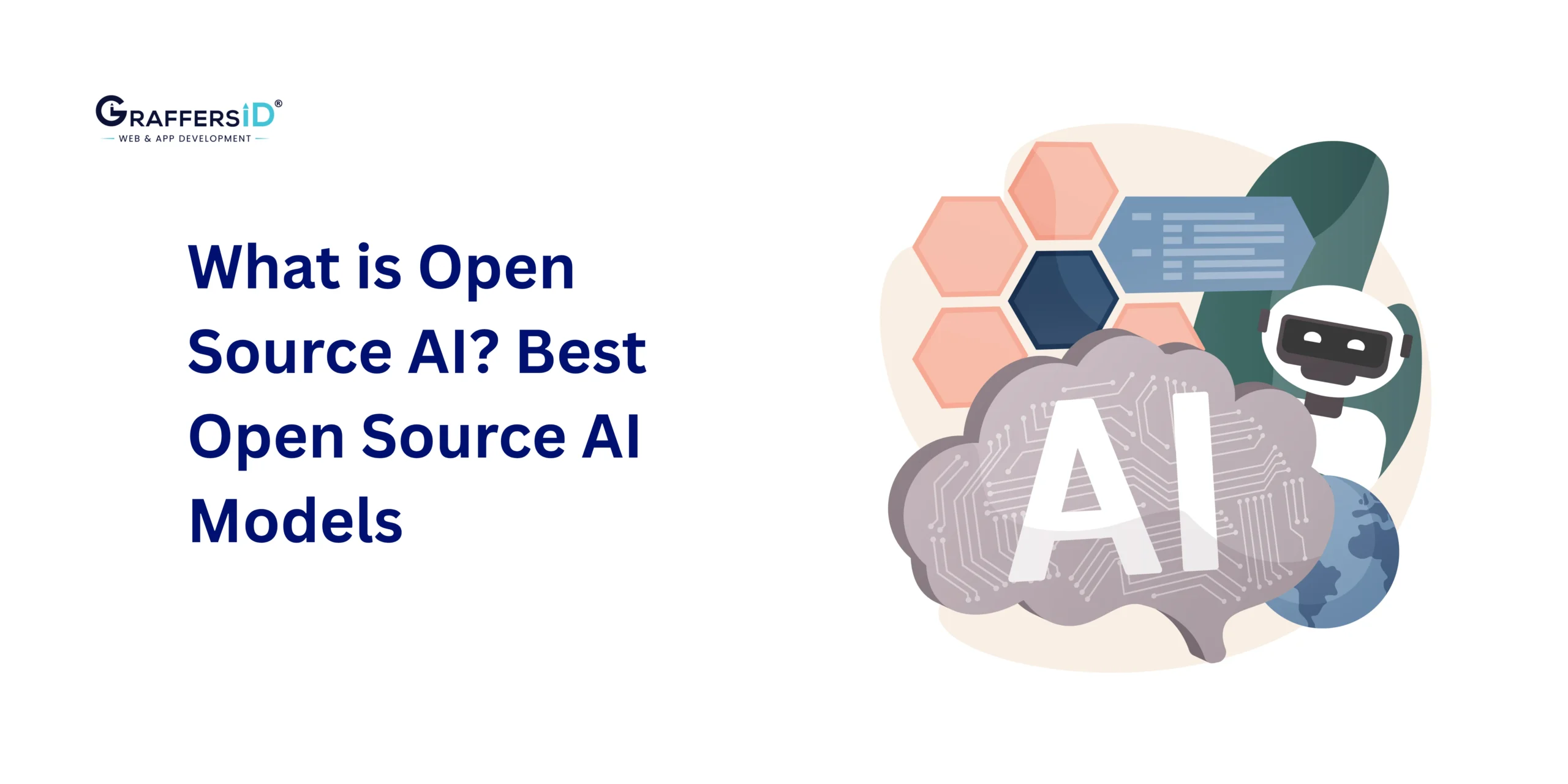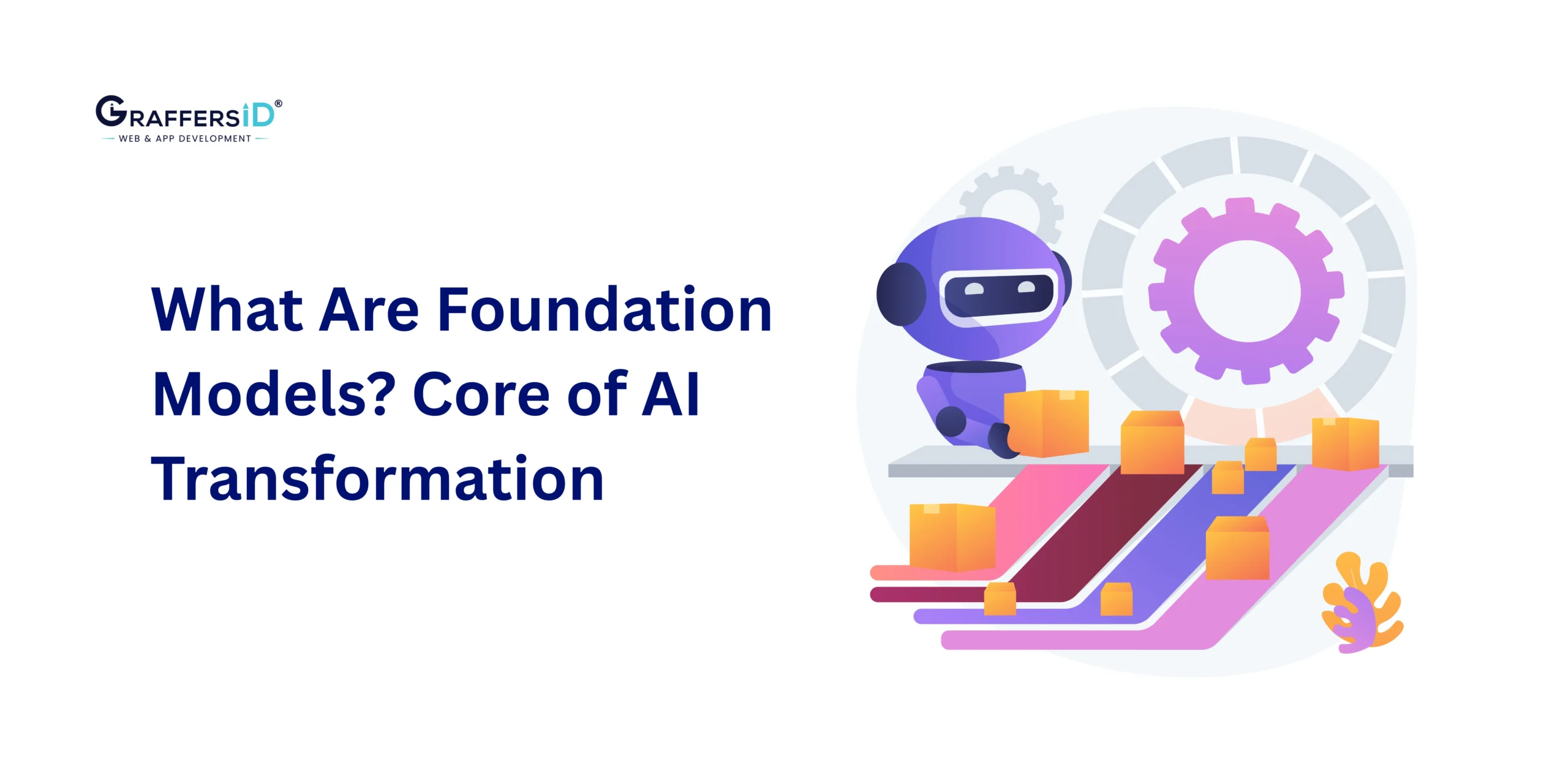Hackers and weaponized AI pose a threat in the current digital world. This is being made real through how artificial intelligence is used to launch harmful cyber attacks. Since 2016, they have increased in intensity, employing more than 50 algorithms to break into systems through antics like phishing and malware.
Threats include one special tool for making fake content: Generative Adversarial Networks. These networks can develop deepfake videos and even generate secret phishing messages, which dupe computers and humans with equal ease.
Many of these smart attacks will become more common; about 75% of experts indicated that they have seen the incidence increase, with 85% blaming advanced AI methods for this occurrence. DARPA is one agency that is going all out to address the issue, which shows equally how AI can be used for both good and bad purposes.
The Rise of Weaponized AI in Cybersecurity
AI is indeed getting smarter, and similarly with AI hackers. They are now able to utilize AI to break into systems in ways that have never been seen before.
AI-based cyberattacks
To make cyberattacks, hackers have now started using AI. Such cyberattacks make use of smart algorithms on the lookout for weak points in digital systems in order to cause a break-in. They do not guess but rather adapt, therefore becoming smarter over time.
AI doesn’t stop at finding loopholes; it now includes phishing by writing harmful software that creates fake videos that look real, made to fool people or to steal data. It’s estimated that by 2026 close to all content online will be AI-created. Civilizations are bringing risks of complexity to the internet, making it a pretty tricky place to sail safely. For more insights on these emerging threats, visit the Guardio security blog.
Network architecture vulnerabilities
The network architecture has weak spots that most hackers just love to get their hands on. With the advancement of AI, which is getting smarter in cyber attacks, these vulnerabilities are converted into big doors to solve problems. For example, smart attacks learn very fast from their mistakes and adjust themselves while they could be proven hard to detect before they cause damage.
The statistics are indeed disturbing: 75% of security professionals believe more attacks are happening, and up to 85% of experts blame generative AI for the skyrocketing; and here’s a kicker- while half of IT leaders feel they’re in the dark about defending against such advanced threats, only 52% are somewhat confident in telling if their CEO’s voice was faked in any communications. This illustrates how advanced and elusive these AI-based pieces of darkness can get, taking advantage of every loophole in network defenses.
The Role of Generative Adversarial Networks (GANs)
- Synthetic media creation
GANs have mastered the art of synthetic media, and the output has popularized deepfake videos. Put simply, one network fights against another whilst one creates, the other judges. GANs can just about completely imitate the voices and faces of real people. Imagine you’re watching a video in the voice and face of someone extremely famous, saying and doing things they never actually did or said. Now, that’s what we are dealing with.
The trouble is deeper than fake social media posts; it threatens to rewrite reality. This technology has already set off alarm bells about spreading false information, identity theft, and breaking into the personal lives of others without permission. For example, a report released by the Georgetown Center on Privacy and Technology back in 2020 stated, “AI could be used to create fake but convincingly real-feeling news or videos.”.
With the UK’s NCSC predicting that AI will lead to further cyber-attacks, it is clear this is not just sci-fi stuff it’s- already happening, challenging how we detect lies from truth online. It’s already happening, challenging how we detect lies from truth online.
- Evasion and impersonation tactics
It’s not a normal scam, but simply normalized credential theft or malware insertion.
Imagine getting an email that looks like your boss wrote it but your boss did not write it, that is how good they are at impersonation.
Then there’s the voice cloning AI now that’s just sneaky. It really scores peoples’ voices and puts together a clone, and you might get a call thinking it is from someone you trust, but surprise, it’s a hacker at the other end.
Not only will they crack CAPTCHA puzzles, but they are also teaching AI to think in the likeness of humans these twisted images and texts we type to prove we’re not robots. With deep fake technology, hackers go to the extent of creating videos and sound clips so real that you would swear it’s genuine, no sweat.
Detection and Mitigation Strategies
- Anomalous entities detection
AI and ML have now given organizations the tools to identify odd patterns and behaviors that stick out. Not only do these technologies work hard, but they are also smart, analyzing the ordinary patterns of peoples’ behavior across the organization’s network to identify anomalies.
The ability to learn from normal behavior is what particularly allows AI to pick up on how hackers tend to be good at subtlety and how the software itself starts to misbehave in ways it shouldn’t. Going from detecting such sneaky signals to fighting back against phishing truly underlines the importance of staying ahead in cybersecurity.
- Anti-phishing technologies
From weird behavior identification in networks, let’s now dive into how to halt the sly attempts of phishing. Phishing deceives people into visiting malicious websites or inadvertently opening dangerous emails. Luckily for us, tech gurus have cooked up some clever defenses against hostile websites.
They have gone the extra mile and developed some machine learning tools to detect most of these tricks even before causing any harm. Picture it: an email whizzing by, reviewed by a digital guardian trained on every move of phishing scammers. You’d be surprised at the number of fake requests for personal info or links to shady sites that it’s likely to catch.
It’s smart tech that gets better with every attack it sees. It learns from its mistakes and is a stronger shield against hackers who want to break into systems. At every new trick that cyber crooks come up with, anti-phishing programs adapt to make sure that only safe messages hit your inbox, always staying a step ahead of the hackers.
The Rising Threat of Automated Bot Attacks
- The Emergence of AI-driven botnets
Another alarming trend in weaponized AI is the increasing use of bots automated for large-scale attacks. Such bots, driven by sophisticated AI algorithms, have the capacity to attack multiple targets simultaneously, thus overwhelming defenses and creating pervasive havoc. This is, at times, equated to a botnet attack because it injects thousands of devices compromised by this infection into the network, holding them hostage to be flooded with traffic or updated with malware, at which point it becomes extremely hard for any traditional security measures to keep up. This highlights the urgent need for an improved defense driven by advanced AI such that the adaptation and response remain at the level of any newly on-setting threat.
AI Integration in Malware: Enhancing Evasiveness and Persistence
- Environmental Decomposition and Adaptive Behavior
The incorporation of AI into the core of existing malware has made the development of much more evasive and persistent threats possible. Laced with artificial intelligence, modern malware carries out environmental decomposition so that it remains undetected and changes the pattern of behavior based on those to avoid triggering security systems.
- AI-Enhanced Ransomware
For instance, some advances in AI-empowered ransomware are able to determine the value of data being encrypted and then demand ransom accordingly. This added flair not only hooks the attack on a deeper level but also makes life really hard for cybersecurity professionals to come up with effective countermeasures. And, as AI progresses, very unlikely capabilities will continuously be improved upon in terms of defensive technologies.
The Social and Political Implications
AI weaponization and the ethical issues at hand transcend beyond cybersecurity’s immediate concerns. The possibility of using AI in state-sponsored cyber warfare is a development filled with huge geopolitical and ethical issues. Nations might use AI to spy, destroy vital infrastructure, and engineer public opinion globally. This will certainly impose a threat to international stability and create enormous qualitative moral dilemmas regarding the development and use of AI. Convergence of offensive and defensive capabilities against AI cyber attacks calls for norms and regulations by the international community in using AI in cyber warfare, to set out the principles of use for those powerful tools in using responsibly and ethically.
Influence on democratic processes
Hackers are parading around as cyber terrorists with weaponized AI, messing with democratic processes in major ways. They are really good at tricking people by using AI. Deepfakes make it look like someone is saying something when they never did; truth is mixed with lies.
This massively screws up elections and public opinion. For instance, the European Parliament has accused Russia of the intentional dissemination of false information. Before media literacy and a capacity for developed critical thinking now instilled through lessons, people now have to be better at telling what’s true from what’s false.
If this was not bad enough, throw deepfakes into the discussion, and truth becomes stranger than fiction. To keep democracy strong, we’ve got campaigns that don’t just work with mere facts thrown around; they tug on the very hearts and minds of people. This does more because it reaches deeper. Misinformation is all over.
Misinformation and public opinion manipulation
The threat of the manipulation of public opinion through deliberate misinformation grows parallel to the attacks against democratic processes. AI hacking tools are now leading to fake news, posts, and even videos posted on social media that look and sound authentic.
A 2020 report from the Georgetown Center on Privacy and Technology outlined this risk, illustrating how AI could be used to propel false stories far and wide. This breed of cyber trickery isn’t about hacking computers; it’s about hacking people.
The war against fake news is such a hard one, but victory is possible. Media literacy prepares people to distinguish between truth and lies. It aims to teach people how to identify sources of dubious news.
In addition to verifying information and products, warning tags may be issued for unreliable information in order to prevent the spread of falsehoods over the internet. Unfortunately, this decline of local newspapers has allowed many misinformation merchants an easier time because it is also creating a vacuum that accredited news used to fill.
Strengthening Cyber Defenses
Adoption of more advanced AI-powered security technologies, tightening relationships among international cybersecurity agencies, and regularly informing the public about the dangers and signs of cyber threats are on the way to the defense of ventures from “complex attacks,” are the most key issues here.
Ethical AI Development
- Importance of Ethical Guidelines
Another critical factor that can not be overlooked is that of ethical AI development. The developers and researchers must critically follow the strict ethical guidelines, which are aimed at ensuring that AI technologies are not used for any illicit purposes.
- Built-In Security Features
To attain that, it is also important to develop AI systems with built-in security features that are functional and secure, but the development of the whole framework concerning the ethical and responsible application of AI is more crucial. Besides establishing transparency and accountability, the time in the design and development phases can also be used to mitigate the aforementioned risk.
- Global Collaboration and Public Education
Verily, ranging from the adoption of innovative cybersecurity technologies to fostering global collaboration in defining AI standards responsibly and also to the other end of public education on the transition in cyber threats, all these are going to come apart. These specified steps would effectively make our digital world more secure against hackers and weaponized AI, therefore, guaranteeing us a safe and secure future.
In conclusion, the use of artificial intelligence in cybersecurity has brought very extraordinary things and, at the same time, has brought completely new security threats. The use of AI by hackers serves as an indication of a dichotomous nature of AI, both as a positive instrument for security and as a weapon for malicious activities. The enhancement of AI technology is being mirrored by the increase in the volume of sophisticated AI-based cyberattacks that leverage tools like Generative Adversarial Networks (GANs) in their execution.
As AI is getting more and more developed, security methods should also adapt. The deployment and utilization of AI-based security solutions are one of the primary measures that organizations should adopt to thwart these smart threats. The creation of moral AI is a necessity if we want it to be used for the right purposes only. It is a matter of including safety measures within the AI system right from the start and also creating an atmosphere of clearness and responsibility in AI research and development.



